
The Canadian Army is the command responsible for the operational readiness of the conventional ground forces of the Canadian Armed Forces. It maintains regular forces units at bases across Canada, and is also responsible for the Army Reserve, the largest component of the Primary Reserve. The Army is headed by the concurrently held Commander of the Canadian Army and Chief of the Army Staff, who is subordinate to the Chief of the Defence Staff. The Army is also supported by 3,000 civilian employees from the civil service.

A military band is a group of personnel that performs musical duties for military functions, usually for the armed forces. A typical military band consists mostly of wind and percussion instruments. The conductor of a band commonly bears the title of Bandmaster or Music director. Ottoman military bands are thought to be the oldest variety of military marching bands in the world, dating from the 13th century.
Canadian Forces Base Borden, formerly RCAF Station Borden, is a large Canadian Forces base located in Ontario. The historic birthplace of the Royal Canadian Air Force, CFB Borden is home to the largest training wing in the Canadian Armed Forces. The base is run by Canadian Forces Support Training Group (CFSTG) and reports to the Canadian Defence Academy (CDA) in Kingston.

Beating Retreat is a military ceremony dating to 17th-century England and was first used to recall nearby patrolling units to their castle.

The Royal Canadian Medical Service is a personnel branch of the Canadian Armed Forces, consisting of all members of medical occupations. Nearly all members of the RCMS, along with the members of the Royal Canadian Dental Corps (RCDC), are employed in the Canadian Forces Health Services Group, an operational formation. The RCMS was formerly designated the Canadian Forces Medical Service until it was redesignated on October 9, 2013.
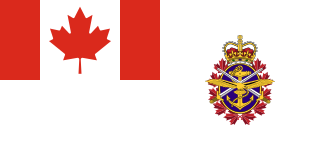
The following is a list of the notable authorized marches for various organisations of the Canadian Armed Forces. The first march listed is the march most commonly performed for that organisation on parade; it is commonly referred to simply as that organisation's "march" or "march past". In addition, many organisations also have additional pieces for slow marches, marches for mounted parades, pipe marches, etc.; they are subsequently listed and footnoted as applicable.

A military tattoo is a performance of music or display of armed forces in general. The term comes from the early 17th-century Dutch phrase doe den tap toe, a signal sounded by drummers or trumpeters to instruct innkeepers near military garrisons to stop serving beer and for soldiers to return to their barracks and is unrelated to the Tahitian origins of an ink tattoo.

Personnel branches, in the Canadian Armed Forces (CAF), are groupings of related military occupations.
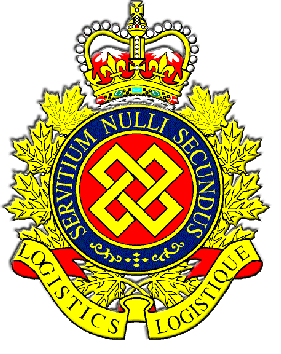
The Royal Canadian Logistics Service is a personnel branch of the Canadian Armed Forces (CAF).

The Royal Canadian Chaplain Service is a personnel branch of the Canadian Armed Forces that has approximately 192 Regular Force chaplains and 145 Reserve Force chaplains representing the Christian, Muslim and Jewish faiths. From 1969 to 2014 it was named the Chaplain Branch. It was renamed on October 16, 2014.
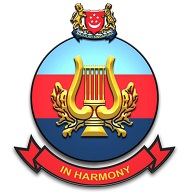
The Singapore Armed Forces Band form the musical arm of the Singapore Armed Forces. Consisting of the SAF Central Band and the SAF Ceremonial Band, the SAF Band provides musical support for key events such as the National Day Parade, SAF Day Parade, Passing Out Parades, Change of Command Parades and other military duties. Other than discharging ceremonial duties, the SAF Band also presents public concerts that aim to bring a wide range of music to the populace. They also seek to build up the band's music repertoire into an extensive array of styles and variety.
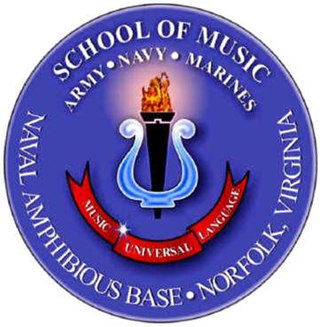
The Naval School of Music is a United States Navy school located at Joint Expeditionary Base Little Creek–Fort Story in Virginia Beach, Virginia. The school's mission is to provide specialized musical training to musicians of the Navy and Marine Corps military bands. The school does not provide training for musicians of the Air Force or Coast Guard. The school no longer provides training to Army musicians, although the Army school is co-located with the Navy school and they share facilities.
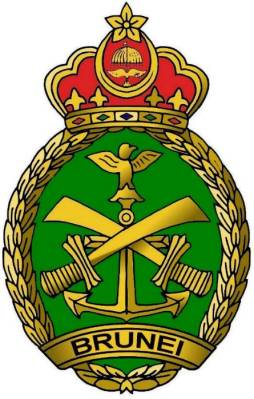
The Royal Brunei Armed Forces (RBAF); Malay: Angkatan Bersenjata Diraja Brunei, (ABDB), is the collective term for all of the military forces or service branches of the sultanate of Brunei Darussalam. The RBAF consists of three primary military branches; the Royal Brunei Land Forces (RBLF), the Royal Brunei Navy (RBN), and the Royal Brunei Air Force (RBAirF).

The unification of the Canadian Armed Forces took place on 1 February 1968, when the Royal Canadian Navy, Canadian Army, and Royal Canadian Air Force were merged to form the Canadian Armed Forces.

The Royal Canadian Artillery Band is one of six Regular Force bands in the Canadian Armed Forces. Located at Canadian Forces Base Edmonton, the RCA Band provides music designed to support Canadian Forces operations, foster morale and esprit de corps, and promote Canada and the Canadian military nationally and abroad. The band operates mainly in western Canada and is de facto the representative band of the Canadian Army in the western provinces. All unit members are professional musicians in addition to being members of the military, which enables the band to adopt a variety of configurations to suit the musical needs of their audiences. Ensembles can range from jazz combos, rock bands, and chamber groups, through stage and show bands to full marching and concert bands.

Canadian military bands are a group of personnel in the Canadian Armed Forces (CAF) that performs musical duties for military functions. Military bands form a part of the Music Branch of the CAF, composed of six full-time professional Regular Force bands, 15 Regular Force voluntary bands, and 53 part-time reserve force bands. Bands of the Music Branch are often badged with the unit or Canadian Forces base insignia that they support.

The Canadian Forces Tattoo 1967 was a series of military tattoos or displays performed by members of the Canadian military portraying more than three hundred years of Canada's military history. The Tattoo, which was the Canadian military's contribution to Canada's centennial year celebrations in 1967, toured the country from coast to coast. This was the largest such event in the history of the Canadian military.
The Armed Forces of Malta Band is a Maltese platoon-sized musical group representing the units of the Armed Forces of Malta (AFM). The AFM Band is a regular participant in official events and ceremonies, mostly performing on major holidays such as Republic Day in December. The band's area of responsibility includes Malta and Gozo. The personnel of the AFM Band make up the only specialised marching band on the island. The band currently has 43 musicians in its ranks, who, besides their duties as bandsmen, also perform their military duties as medics and security officers.
The Canadian Forces School of Music, CFSM was an educational institution that supported the music branch and all Canadian military bands in the Canadian Forces. It was created in 1954 in Esquimalt, British Columbia for musicians of the Royal Canadian Navy, with the school being the Canadian equivalent of the United States Armed Forces School of Music and the Royal Military School of Music. In 1961, the school was expanded and rebranded to include musicians from the Canadian Army and the Royal Canadian Air Force, and by the time of the Unification of the Canadian Armed Forces in February 1968, the school had officially been renamed to the CFSM. For its entire existence, the CFSM was located at CFB Borden in Ontario and offered enrolled students with a two-year educational program until it was disestablished in 1991. Enrollment varied with the requirement for musicians. The school also gave a one-year program to CF musicians with experience in the music branch who wish to serve in leadership positions in CF bands. Personnel of the Regular Force who wish to be qualified to as a pipe major have to attend a year long course at the CFSM in order be appointed to the post.

Navy bands in Canada are part of the Royal Canadian Navy's command structure and overseen by the Music Branch of the Canadian Forces and the Directorate of History and Heritage of the Department of National Defence.

















